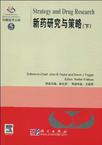新药研究与策略(下)
出版时间:2007-10 出版社:科学 作者:穆斯 页数:354
前言
本卷针对药物化学家关心的问题,从战略角度讨论制药(和生物技术)研究和开发,用多种互补性视角阐明如何思考该领域许许多多重要而有趣的问题。本卷是《药物化学百科》系列新增的一部分,在第1版没有独立成卷。本卷将吸引在生物技术和制药领域众多从业人员,无论是技术专家还是管理人士。就战略预测技术而言,本卷专题讨论的内容,在全书其他分卷也可能出现,特别是第1卷(总论)和第8卷(实例分析);关于更多的科学观点细节,可能出现在第3卷(技术)、第4卷(计算机辅助药物设计)、第5卷(药动学和相关技术)、第6卷(治疗领域)以及第8卷(实例分析)。本卷将对上述领域提供一个共同背景,一种进入其他章节的台阶,指引读者阅读相关文献,查找经典论文、综述、原始文献、最新报刊、网络引文、典型事例、珍闻轶事、奇术怪招、简短而代表性的研究范例。什么是药物研究战略?战略即为达到特定目标而设计的行动计划,用最小的队伍和最简单的手段到达终点。药物研究的最终目标是将一种候选药逐步向前推进,通过R&D后期各阶段,直至上市。即使新药上市,病人使用后获得成功治疗,研究也不能停止;还要收集安全性资料,研究新适应症,研究改变剂型和药物制剂,改进疾病新的治疗方法等。这个过程似乎总在循环往复,永无休止。在常人看来,这个过程虽然是高技术、大规模、成本昂贵,但常见的是试验和差错。当然,正如您将看到的,实际过程要复杂和丰富得多。战略问题对制药和生物技术企业特别重要。这是因为开发一种新药需要10年甚至20年,花费10亿美元以上,不得不给予更多注意。在学术界与工业界的交叉领域、强与弱、老与新、战略与战术交织混杂之处,市场力量如何运作?对以上问题,本书都将涉及。对领导和管理的科学基础,项目管理中从研究到开发的转换,哪些依托单位内部完成和哪些依靠外部资源进行,哪些知识产权在本单位创造,哪些由许可证交易获得,都从实用角度一一讨论决策。挑战与机会、管理科学家、领导、企业家与雇员,以及促进创新,都全方位给予思考。本书对比了制药企业和生物技术公司怎样审查、如何及为何采用新技术新方法,怎样对待肽类或肽模拟物,生物电子等排体或手性药物,或者下一种令人倾倒的先进技术。最后还讨论了公司对治疗领域药物靶标如何选择决策(包括相关背景信息),以及讨论比较了多元模式和聚焦模式。对于全人类和生命中每一阶段,健康都是最重要的。有机会工作在制药业和生物技术R8LD舞台,应当深感荣幸和愉快。如果本卷尽了绵薄之力,有助于指导当今技术发展,以便救治更多生命,提高生活质量,就达到了我们的目的。谨作序于斯,希望您阅读愉快。
内容概要
本册是《药物化学百科Ⅱ》该书以几类重要靶标为背景,系统介绍了靶标策略和药物研究。 本册分为两个部分,共9章。第一部分:选择单一靶标与选择治疗领域的策略比较(第19章):介绍了现代制药业中生物技术的驱动性作用以及新药研发中主要的靶标选择的策略;明确了新药研究中靶标相关的几个概念,包括靶标、分子靶标、治疗靶标、可用作药物的靶标、药物靶标;客观评述了“基因组学泡沫”对药物靶标发现的影响;同时在可实践的水平介绍了基于不同的靶标选择策略建立研发公司的类型及新靶标中的知识产权的情况。第二部分:8类最重要的药物靶标的背景与药物研究(第20~27章),从通用命名法、分子生物学分类、蛋白质结构、生理学功能、信号途径、原型药物药理学、原型药物治疗学、与疾病的遗传相关性和今后研究方向等方面依次介绍了8类药物靶标及其药物。
作者简介
作者:(美国)穆斯 编者:张礼和
书籍目录
靶标 2.19 选择靶标和治疗领域的多元模式和聚焦模式 2.20 G-蛋白偶联受体 2.21 电压门控离子通道 2.22 配体门控离子通道 2.23 磷酸二酯酶 2.24 信号转导通路相关蛋白激酶和蛋白磷酸化酶 2.25 核激素受体 2.26 核酸(脱氧核糖核酸和核糖核酸) 2.27 氧化还原酶缩写词表符号表主题索引
章节摘录
插图:There have been a number of reviews written in the past several years indicating that there has been a decline in thenumber of new chemical entities being approved by the FDA for marketing.8z-84 There have been almost as manysuggestions on how the drug discovery process can be fixed.82's3'85-89 Drugs for oncology have one of the lowest success ratesfrom first-in-human to registration of any of the therapeutic areas.Many companies launched efforts into thedevelopment of oncology drugs, attempting to respond to the great unmet medical need. Additionally, the severity of thedisease would require shorter clinical trials, and the tolerance for side effects in this disease is greater than for othertherapeutic areas. However, many of these efforts have foundered on lack of sufficient efficacy and unacceptable side effects. A number of concepts are beginning to mature, facilitated by improving technologies that are predicted to increasethe success rate of compounds moving into clinical testing. The concept of biomarkers has become almost universal,and returns to center stage the study of pharmacodynamics. During the drug discovery phase, increased effort andemphasis has been placed on developing assays that will allow the determination of target inhibition in a functionalassay. A simple example is to monitor the phosphorylation of a kinase substrate within the cell environment afterexposure to the respective kinase inhibitor. Elaboration of this assay to in vivo and then the clinical setting would allowmonitoring of target inhibition following dosing. These types of assays will allow the assessment of the magnitude,duration, and consequence of inhibition, leading to a more rapid conclusion of whether inhibition of the target will havetherapeutic benefit. However, often with such assays, translation from discovery to development can be difficult, andalternatives need to be considered. The increasing use of gene chip arrays has prompted some to consider global geneexpression of some readily sampled tissue in response to treatment as an alternative. Moving to this type of assayshould more generally be considered a surrogate of response, rather than a marker of inhibition. Additionally, as diseasesare becoming more molecularly defined, both in etiology and progression, the opportunity for more specific therapies ispresented. A recent example of this would be imatinib, a compound approved for CML.s3 Ninety-five percent of CMLpatients have a particular chromosomal translocation that creates a mutant tyrosine kinase called bcr-abl. Imatinib wasdeveloped to target this particular mutation. Looking to the future, the potential of defining a disease by the molecularpathology and employing specific antagonists to create a 'tailor-made' therapy can be imagined. The major difficulty with any new technologies introduced into drug discovery is the long time frames before theresults are realized by new drugs on the market.91 There are two facets of drug discovery where improvements in theindividual processes would speed the approval process and decrease the amount of money required to bring drugs tomarket. The first area where improvements need to be made is in the overall attrition rates of compounds from first-in-human to approval. Recent estimates put the overall success rate for new chemical entities at 11%.1"83'90 By reducingattrition rates, the expense for the whole process would decrease due to failures in clinical trials, which are the mostexpensive part of the discovery process.
编辑推荐
《新药研究与策略(下)(导读版)》引言,前言和目录均已译成中文,正文部分保留英文原版,别附王莉莉研究员所作中文导读一篇。
图书封面
评论、评分、阅读与下载
用户评论 (总计2条)
- 这些靶标介绍的很到位,新药开发有了指路明灯
- 我们实验室买来做教学参考书的,全英文,足够专业。
推荐图书
- 新药研究与策略(中)
- 高效能人士的习惯全集
- 中国对外贸易中的生态要素流分析
- 药物化学的全球展望(上)
- 计算机辅助药物设计(上)
- AutoCAD 2008 中文版自学手册:模具设计篇
- UG NX4中文版三维造型基础教程
- AutoCAD2007中文版机械制图习题精解
- AutoCAD2007中文版建筑制图基础培训教程
- AutoCAD2007中文版建筑制图习题精解
- CAD建筑装饰造型设计施工图常用图块
- 计算机绘图
- e时代理财100招
- 观图定势买卖AB股
- 电路基础
- 电子电路分析与设计
- 日语能力考试3级文法对策
- “中外名著榜中榜”第九辑(全10册)
- 泰国灵符
- 鬼吹灯同人之盗墓者归来
- 鬼吹灯同人之藏经残卷
- 惊魂迷城之妖楼迷宫
- “中外名著榜中榜”第七辑
- 中国地球物理图集
- 中国地质图集
